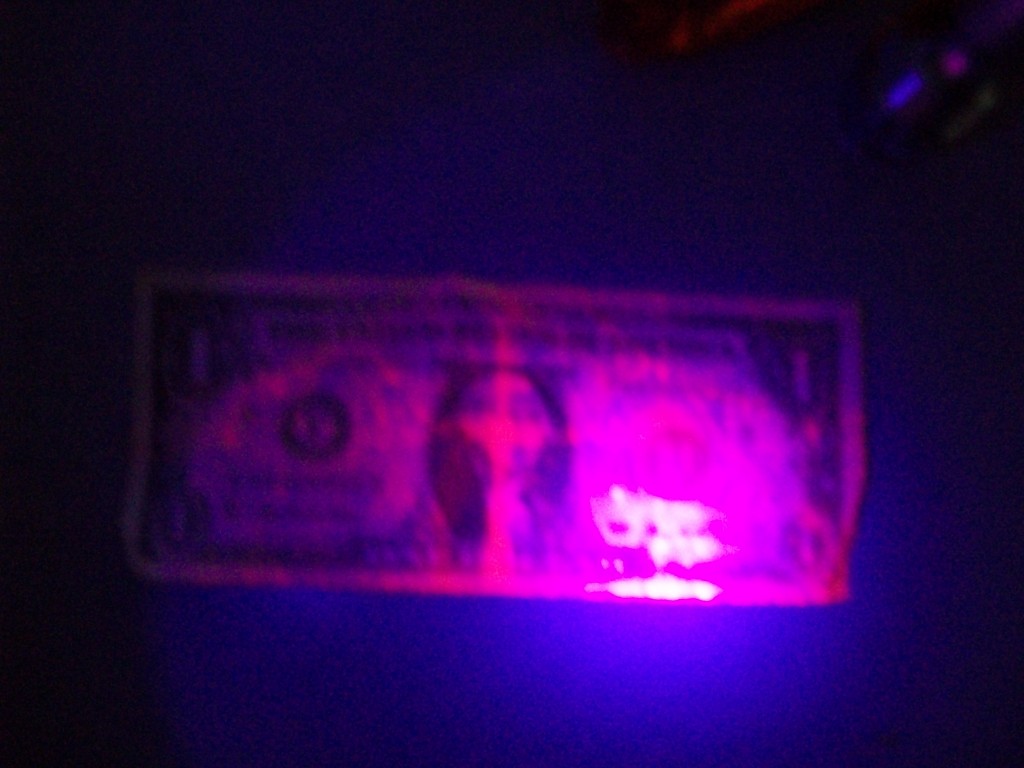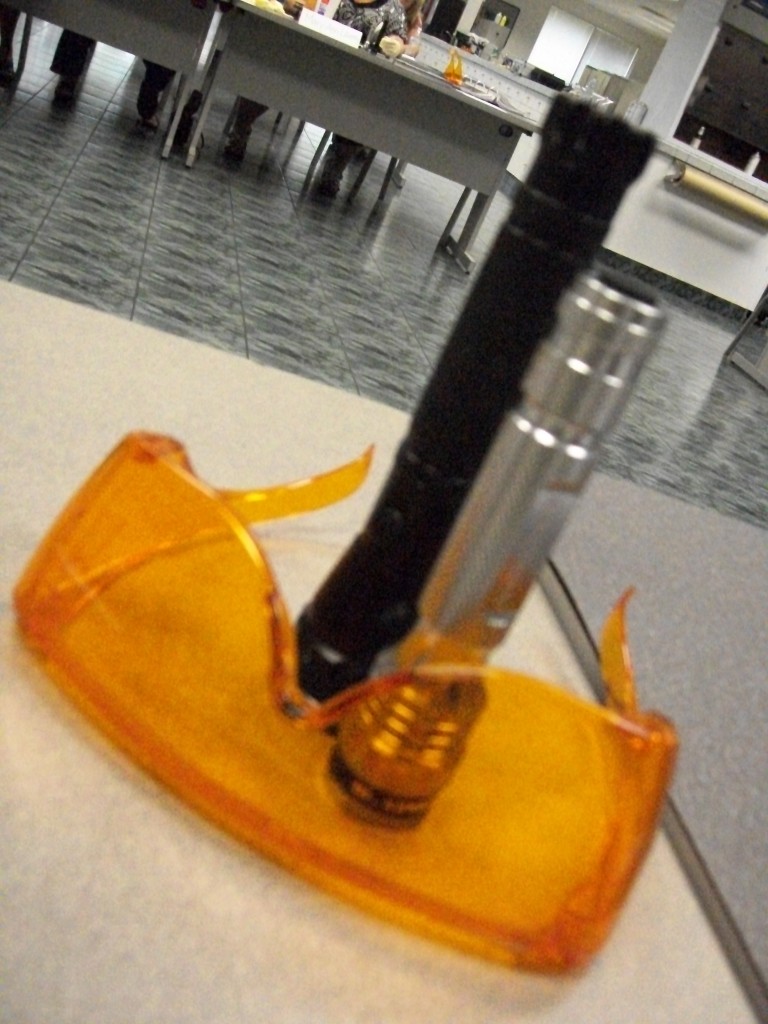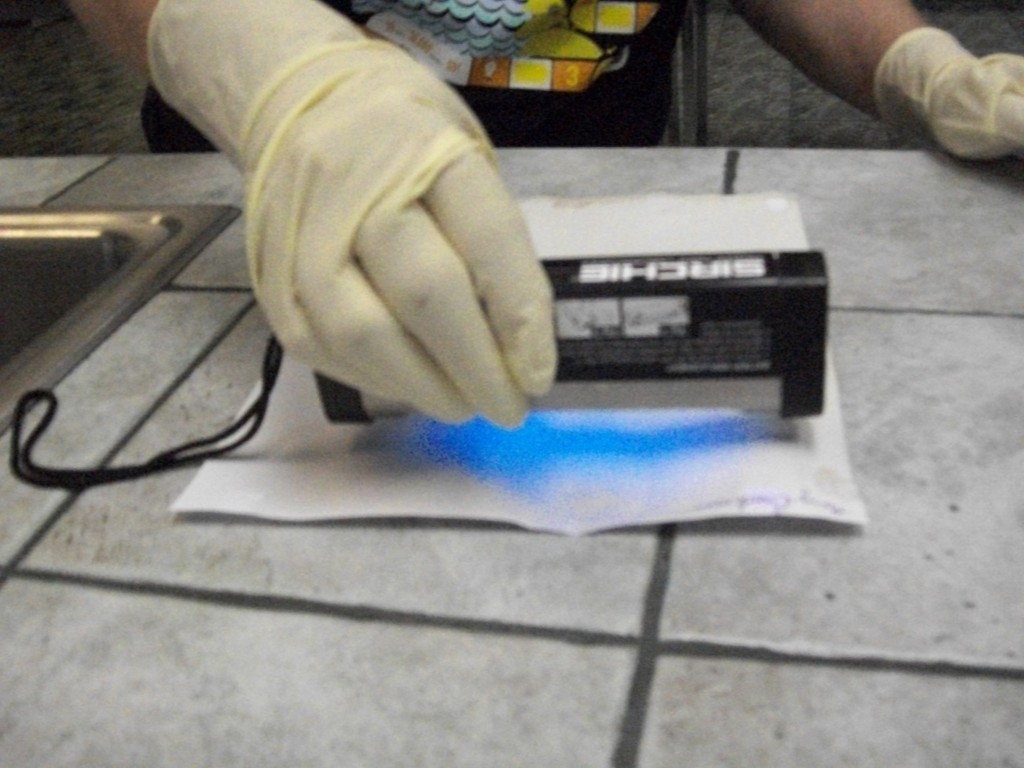As I mentioned yesterday, I am re-posting my blogs from several years ago, when I had the pleasure of studying crime scene analysis at the SIRCHIE Fingerprint Laboratories in Youngsville, NC.
Originally posted July 10, 2012:
You have a document. This document might help you solve a crime. Perhaps it’s one of those crazy letters that serial killers like to send. Or maybe it’s an alleged suicide note. Or a manuscript you suspect has been forged.
Maybe this piece of paper has fingerprints on it. Maybe it doesn’t.
But how will you ever know if you don’t look for them?
Today, Day 2 of the Evidence Collection Course for Writers at the SIRCHIE Finger Print Laboratories in Youngsville, NC, we learned about using alternative light sources and chemical agents to detect finger prints on paper.
Here’s what I learned:
1) It is really hard to lift prints off of money. But I dig the fluorescent pink finger print powder!
2) Alternative light sources can be used in a variety of ways. Detecting fluids and fingerprints are just a few. But please note, blood does not fluoresce! When you see blood glowing in the dark on TV, it’s because Luminol, or some similar chemical agent has been applied to it. It does not glow in the dark by itself.
3) Breaking an iodine capsule in a plastic bag with a document inside and then watching the prints come up is really cool.
4) Chemicals smell, and sometimes take a while to work. After applying Silver Nitrate to one document, and then a UV light to speed up the process, it seemed as if the chemical had not worked. An hour later, the prints began to appear. Pretty groovy!
5) The use of heat or UV light can speed up a chemical reaction. But if you are using a hot steam iron on your document, be careful that you don’t burn it!
Tomorrow, I believe we will be working with blood. Actual blood. I am simultaneously enthralled and grossed out!









